ASCAP is the most well-known giant in the world of music rights and royalties.
For music producers and artists, understanding ASCAP and the fundamentals of performance, mechanical, and digital performance royalties are pivotal.
This knowledge will help you master the complex landscape of the music industry and ensure you receive the compensation you deserve for your creative work.
Without a solid understanding of these elements, fully capitalizing on your music isn’t possible.
In today’s article we’ll break down:
- What is ASCAP ✓
- Performance royalties & mechanical royalties ✓
- Digital performance royalties ✓
- Differences between ASCAP and BMI ✓
- Joining ASCAP and registering all your songs ✓
- Maximizing royalty collection ✓
- Licensing fees and agreements ✓
- Sync licensing ✓
- Public performances ✓
- Role of music publishers & publishing companies ✓
- Much more about what is ASCAP ✓
By the end, you’ll have a solid understanding of ASCAP, BMI, and the mechanisms behind music royalties.
You’ll be able to make a name for yourself within the music industry, collect your royalties, and protect your music rights like a seasoned professional.
So, let’s dive into this legendary performance rights organization…
Table of Contents
What is ASCAP?
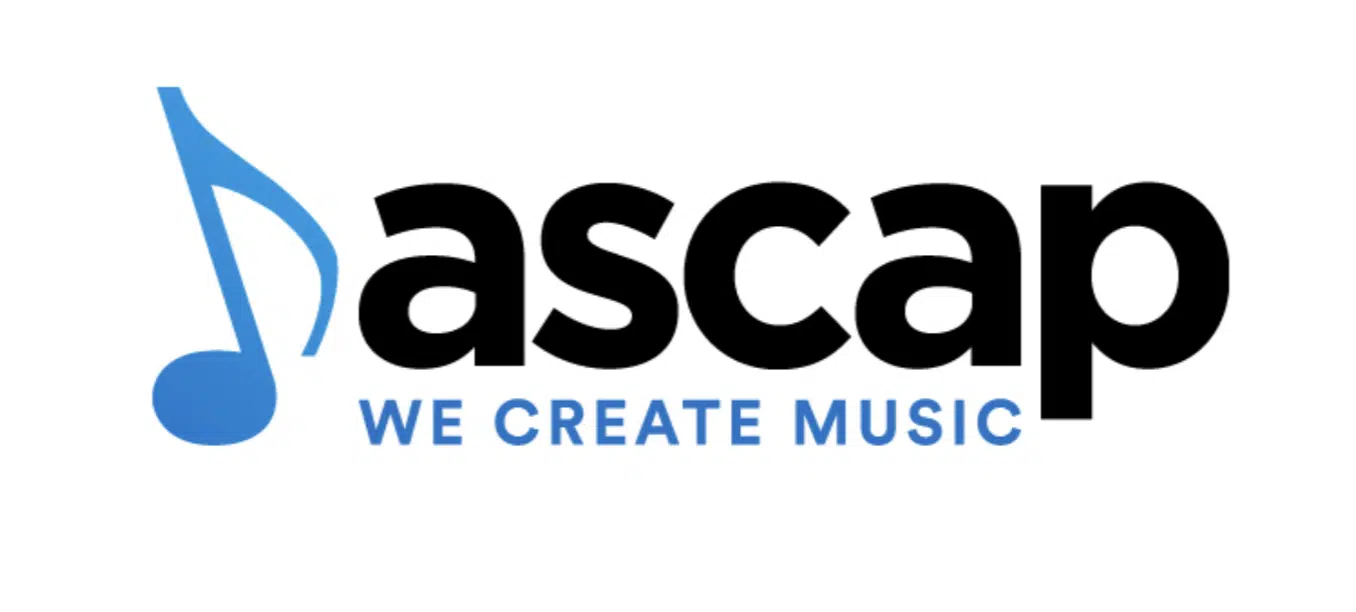
ASCAP (the American Society of Composers, Authors, and Publishers), established in 1914, is a performance rights organization (PRO) that licenses and collects performance royalties on behalf of its members.
For producers, understanding “what is ASCAP?” is super important because it ensures that you’re compensated whenever their music is played publicly.
Whether it’s on radio stations, TV shows, live venues, or even online platforms, you’ll get what you deserve.
The essence of ASCAP’s mission is to protect the rights of music creators (you) and ensure they receive the performance royalties they are owed.
They’re looking out for the musicians behind the masterpieces so they’re hard work is recognized and respected.
For instance, when a hit song is played over the airwaves or streamed online, ASCAP ensures that the songwriters and publishers are paid for these public performances.
This system not only supports the financial well-being of music creators but actually encourages the ongoing creation of new music as well.
It enriches the entire music industry and culture at large, really.
Understanding Royalties in Music Production
Truly understanding royalties can be daunting sometimes. So, let’s break down the different types of royalties, such as performance, mechanical, and digital performance royalties. This way, it’ll help you further understand what is ASCAP.
-
The Basics of Performance Royalties

Performance royalties represent a significant income stream for music creators.
These royalties are generated when music is played publicly, including:
- Radio stations
- Restaurants, clubs, etc.
- Concert music venues
- Television broadcasts
- Etc.
or example, if your song or beat is played in a popular club or on a radio show, you’re entitled to performance royalties for those public performances.
ASCAP collects these royalties from music users and distributes them to the rightful owners, ensuring that creators are compensated for their work.
The process of collecting performance royalties is streamlined by ASCAP’s renowned monitoring and licensing systems.
They use advanced technology to track where and how often a song is played 一 accurately distributing royalties to its loyal members.
This method ensures that even indie songwriters and producers receive payment for the use of their music in public spaces.
For instance, ASCAP’s distribution of performance royalties has enabled countless music creators to sustain their careers.
It highlights how important ASCAP is and the impact it’s made in the music industry.
If you’d like to know all about music licensing, in detail, we’ve got you covered.
-
How to Collect Mechanical Royalties: Explained
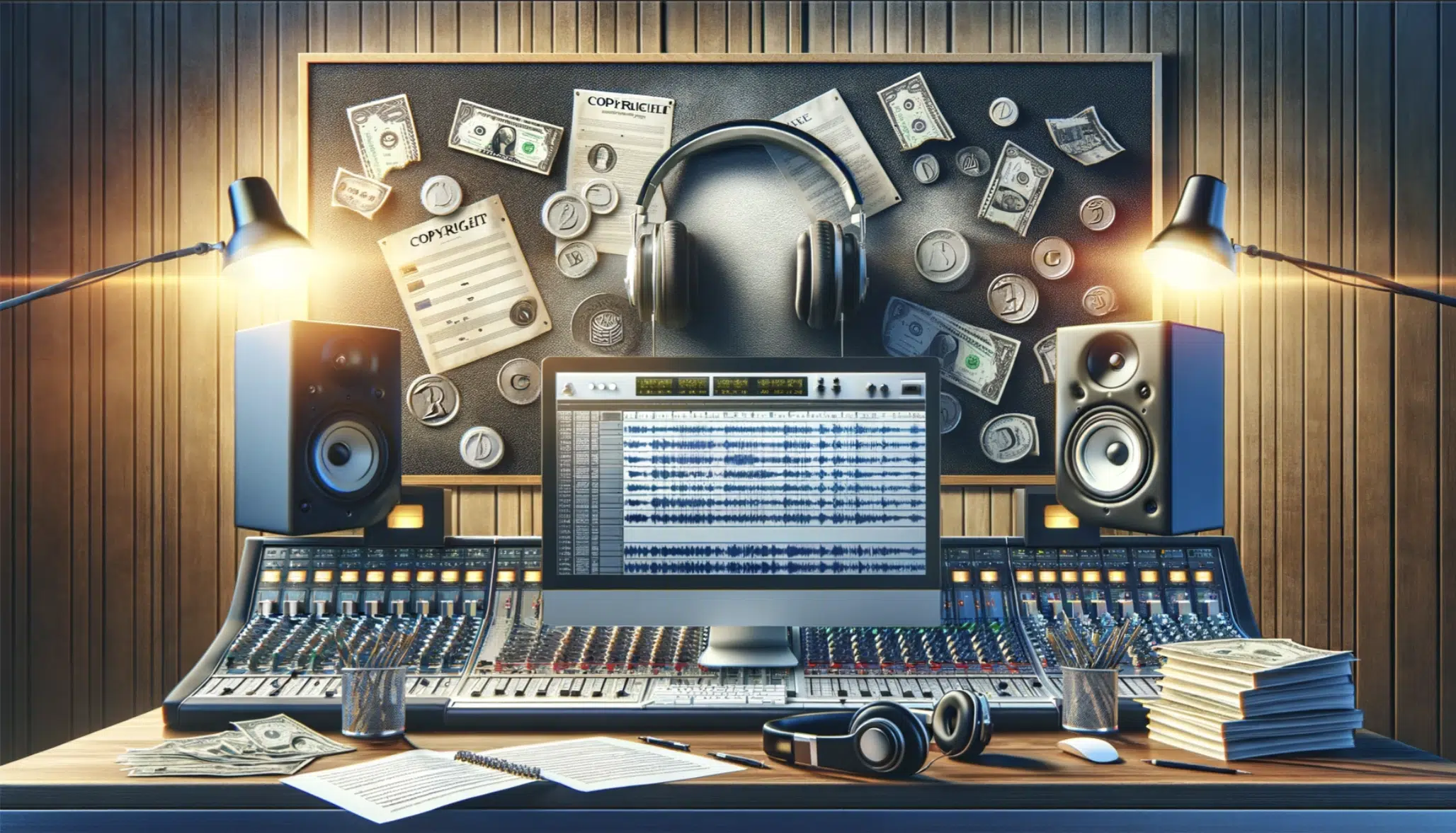
Mechanical royalties are another beneficial revenue source for music producers and songwriters.
These royalties are paid when a musical composition is reproduced, such as in physical copies or (more importantly) digital downloads.
A publishing company becomes key here, as you can have your publishing admin company collect mechanical royalties through:
- Arrangements with record labels
- Digital music services
As a music producer, understanding mechanical royalties and publishing company essentials is key for maximizing income from your music.
For instance, whenever someone purchases a digital download of a track, the songwriter and their publisher are owed a mechanical royalty.
The rate for mechanical royalties in the United States is set by law 一 ensuring that creators are compensated for each copy made of their work.
With the rise of digital music promotion/consumption, mechanical royalties have become a significant part of a music creator’s revenue stream.
NOTE: A publishing company specializes in managing copyrights and promoting music. A publishing company ensures artists, producers, and songwriters receive their royalties for the use of their work.
Publishing companies can help you dominate the complex world of music licensing and secure sync licensing opportunities.
Plus, a publishing company can maximize your earnings from mechanical royalties and performance royalties, so make sure to look into that.
-
Digital Performance Royalties and ASCAP
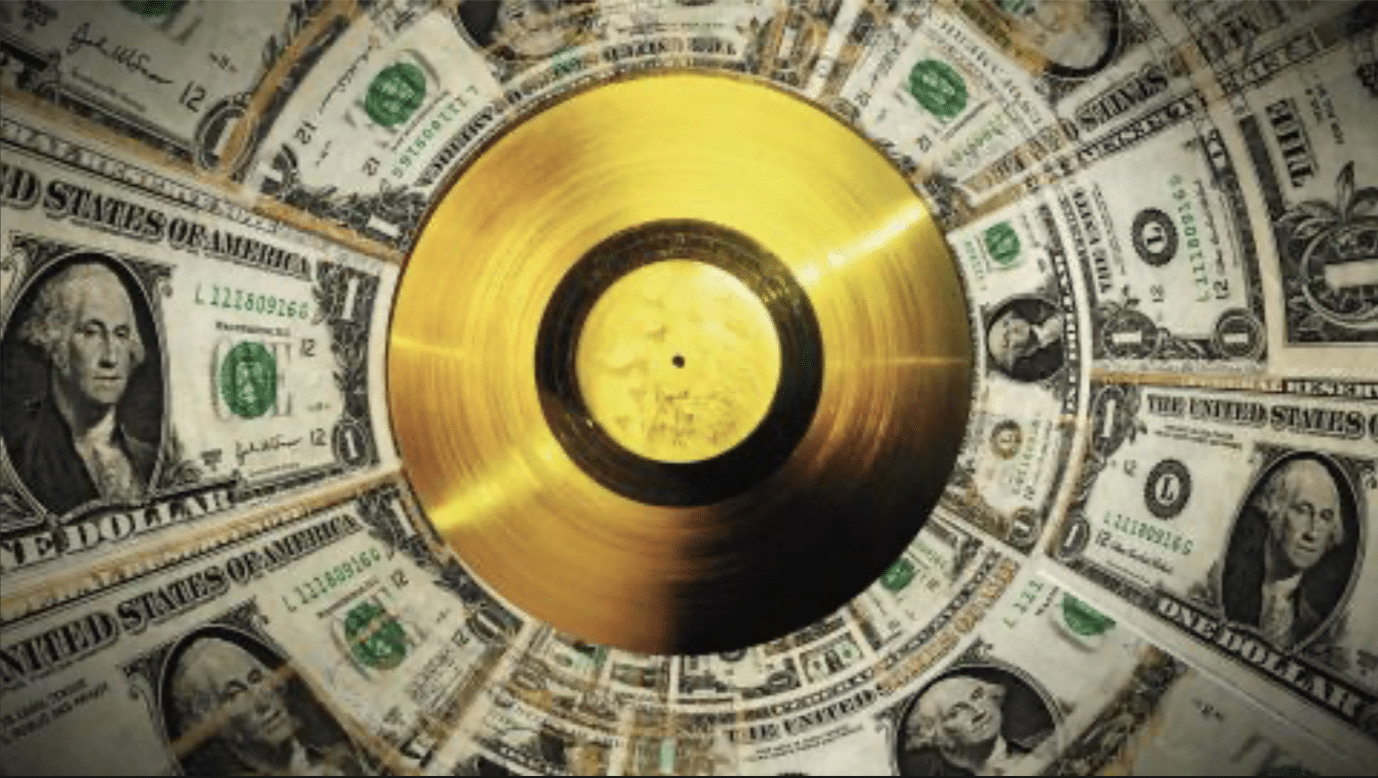
Digital performance royalties are a newer but increasingly important type of royalty for music producers.
These are generated when a song is streamed on digital platforms such as Spotify, Apple Music, SoundCloud, and YouTube.
Or, played on digital radio stations like Pandora and SiriusXM.
ASCAP plays a crucial role in collecting these royalties by negotiating with digital services and platforms to ensure that music creators are compensated for the use of their work in the digital realm.
For example, if your track is added to a popular playlist on Spotify, each stream generates digital performance royalties.
ASCAP collects these royalties from digital platforms and distributes them to the rightful owners; simple and to the point.
This just emphasizes the importance of joining ASCAP as a music producer.
It provides a streamlined avenue for collecting royalties generated from every opportunity you grab.
Key Differences Between ASCAP and BMI
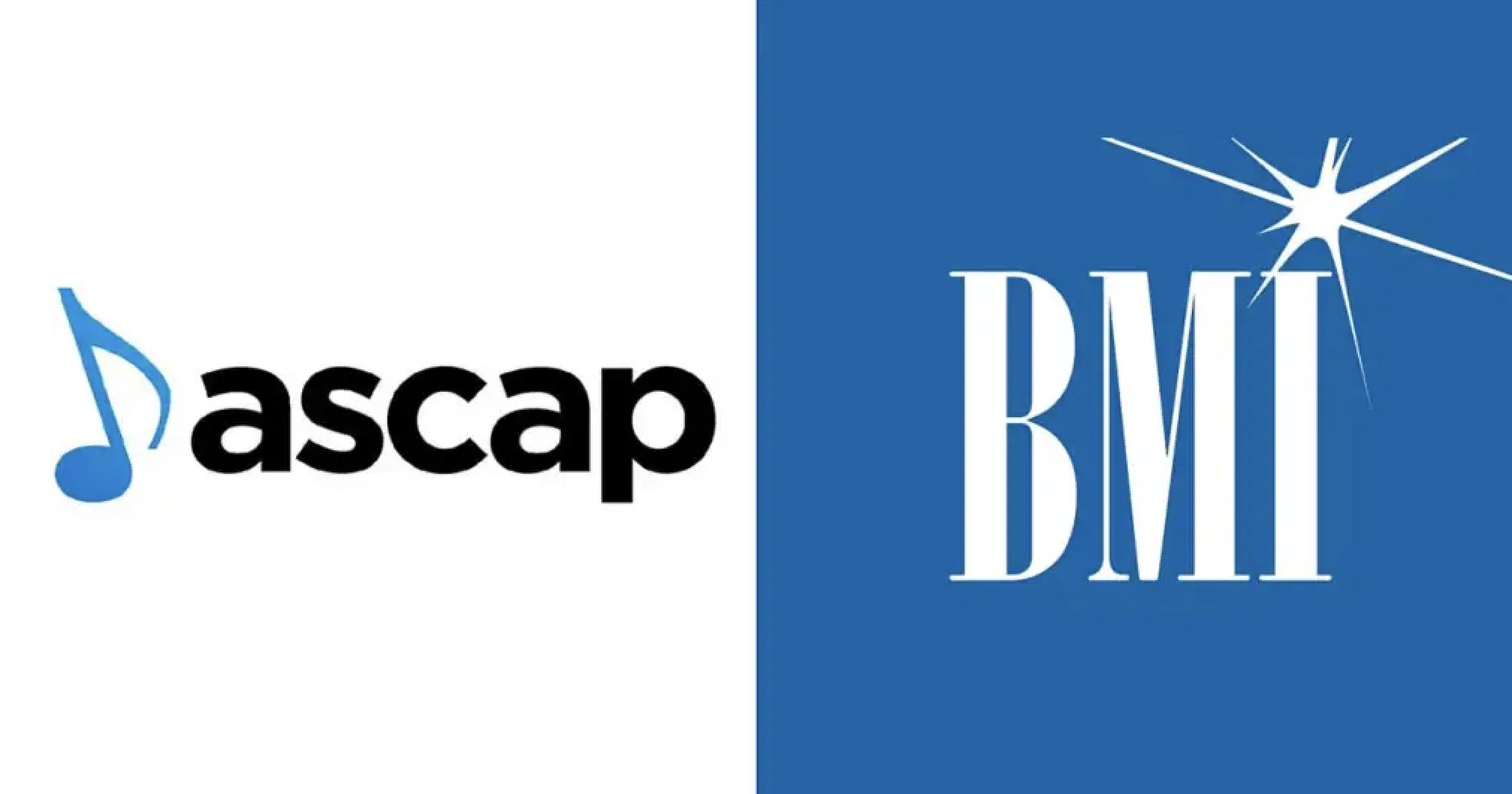
ASCAP and BMI (Broadcast Music, Inc.) are both performance rights organizations, but they differ in several key aspects.
ASCAP is a membership association, owned and operated by its composer, songwriter, and music publisher members.
BMI operates on a non-profit-making model, but both serve the same primary purpose: to collect and distribute performance royalties to music creators.
Understanding the differences between ASCAP and BMI is essential when you’re deciding which organization to join.
One of the main differences lies in their repertoire and licensing agreements.
ASCAP has a huge catalog of over 11.5 million musical works, while BMI has an impressive collection of approximately 17 million works.
This difference between what is ASCAP and BMI can influence where you might prefer to register your work.
It all depends on the genres and music presenters represented by each PRO.
Additionally, ASCAP and BMI handle their royalty distributions differently, with each organization having its own schedule and formula for calculating songwriter payments to its members.
Pro Tip

Another significant difference is the membership fees, service discounts, and requirements.
When you join ASCAP as a songwriter, it requires a one-time application fee (ASCAP license holders pay).
BMI does not charge songwriters to join.
This distinction makes BMI an attractive option for emerging artists and indie songwriters who may be looking for cost-effective ways to collect performance royalties.
However, the choice between ASCAP and BMI should be based on a variety of factors.
These include the services/services discounts, networking opportunities, and resources each organization offers to its members (like a fame membership discount).
-
How Both ASCAP and BMI Handle Royalties
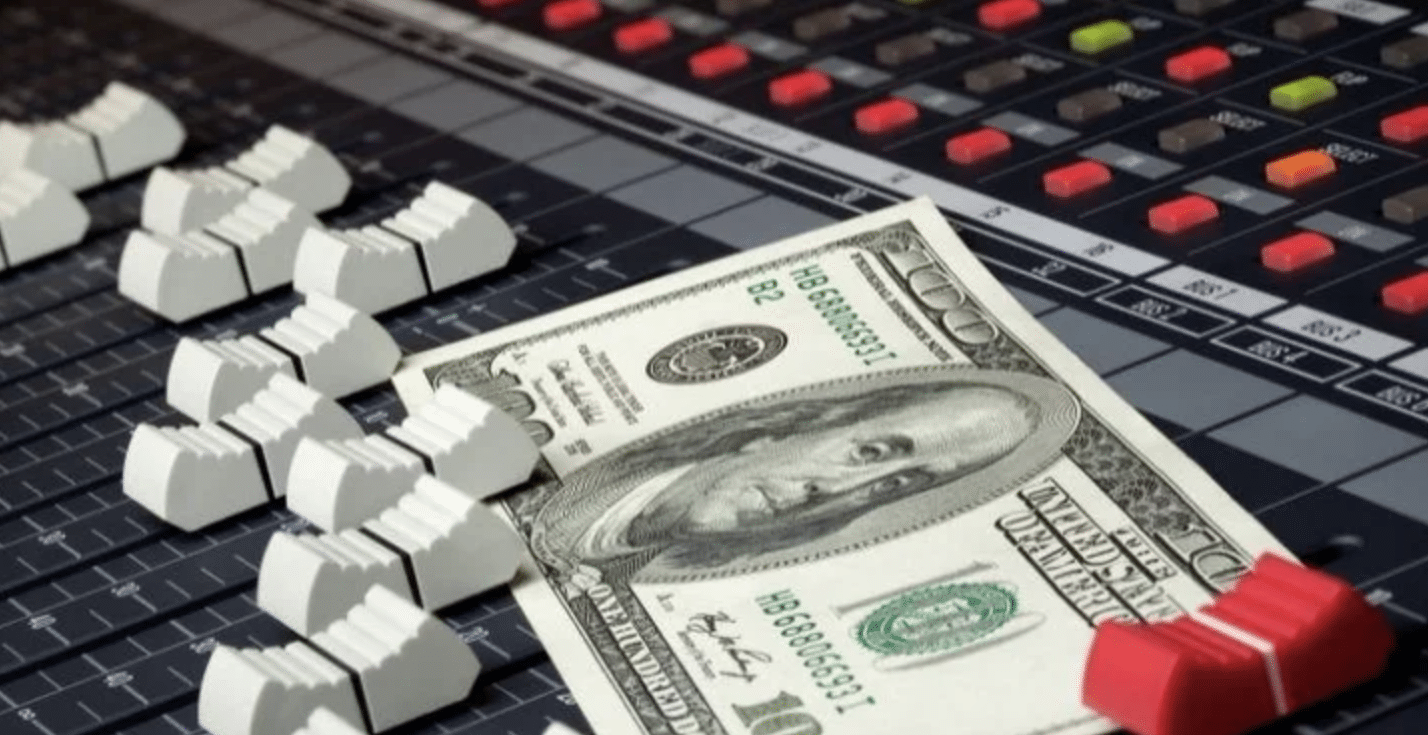
ASCAP and BMI are two performance rights organizations that collect performance royalties from music users through licensing agreements.
Then, they distribute these royalties to their members based on a complex system of credits and performance data.
Understanding how both ASCAP and BMI handle/collect royalties is key to getting the most out of your music-making career.
ASCAP utilizes a system to calculate royalties that considers factors such as:
- The song’s duration
- Genre
- Source of performance (e.g., radio, TV/movies, video games, live performance, songwriting apps, etc.)
This ensures that music creators are compensated in proportion to the use and popularity of their works.
BMI and BMI affiliates, on the other hand, use a somewhat different method that also takes into account digital streaming data and live concert performances.
This can result in variations in the royalty payments that members of ASCAP and BMI receive for similar usage patterns.
For instance, a song that sees a significant amount of live performance activity might generate more relevant royalties for its creator if registered with BMI due to their specific weighting of live performances in their royalty distribution formula.
Joining ASCAP
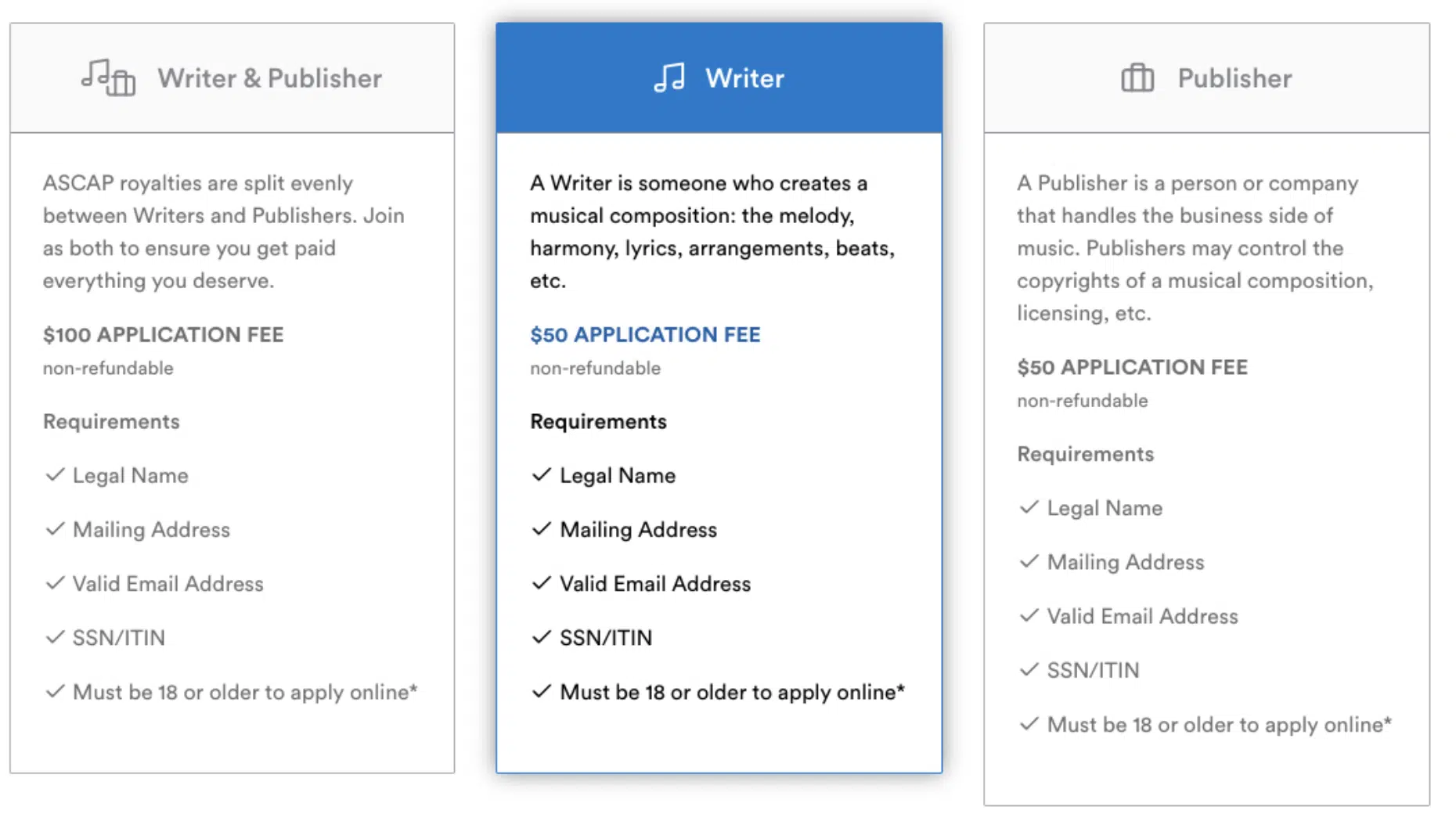
Joining ASCAP is a straightforward process designed for you to start collecting royalties for all your songs as soon as your music is performed publicly.
For music producers, artists, songwriters, composers, and publishers, the first step involves completing an online application on ASCAP’s website.
This process includes:
- Submitting personal information
- A small one-time application fee (no additional signup fees) for professional songwriters and publishers
- Providing details about your music catalog
Once the application is approved and you officially join ASCAP, members gain access to resources, songwriting tools, and services designed to support music career growth.
It further ensures you receive the royalties you’re owed.
After joining, members are assigned an ASCAP member ID, which is used to track performances of their music across various platforms and venues worldwide.
This system allows ASCAP to accurately collect and distribute performance royalties on behalf of its members.
Plus, ASCAP offers educational resources, courses, music programs, networking opportunities, and events to help new members navigate the music industry.
As well as understand your rights and maximize your earnings.
By joining ASCAP, music creators take an essential step toward protecting their intellectual property and ensuring they are paid for their tracks.
Pro Tip
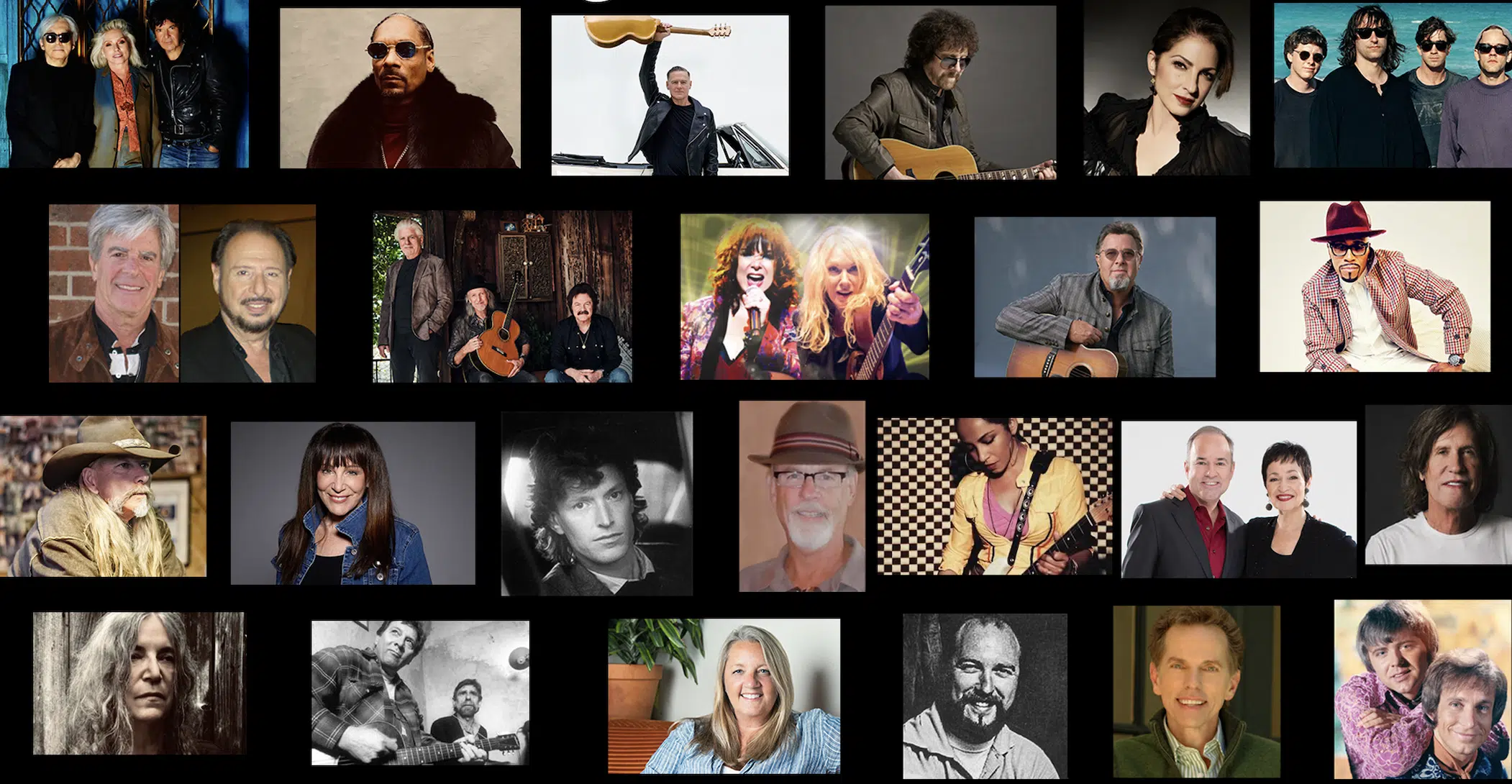
Members of ASCAP have the unique opportunity to be recognized among their peers and receive acknowledgment for their artistic contributions with ASCAP Songwriters Hall of Fame.
The Songwriters Hall of Fame showcases a diverse range of genres and styles.
It reflects reflecting the greatness of music created by ASCAP members with an ASCAP membership.
It doesn’t only highlight the achievements of individual songwriters (even musical theatre majors) but also helps get your name out there in a huge way.
How ASCAP Collects Performance Royalties
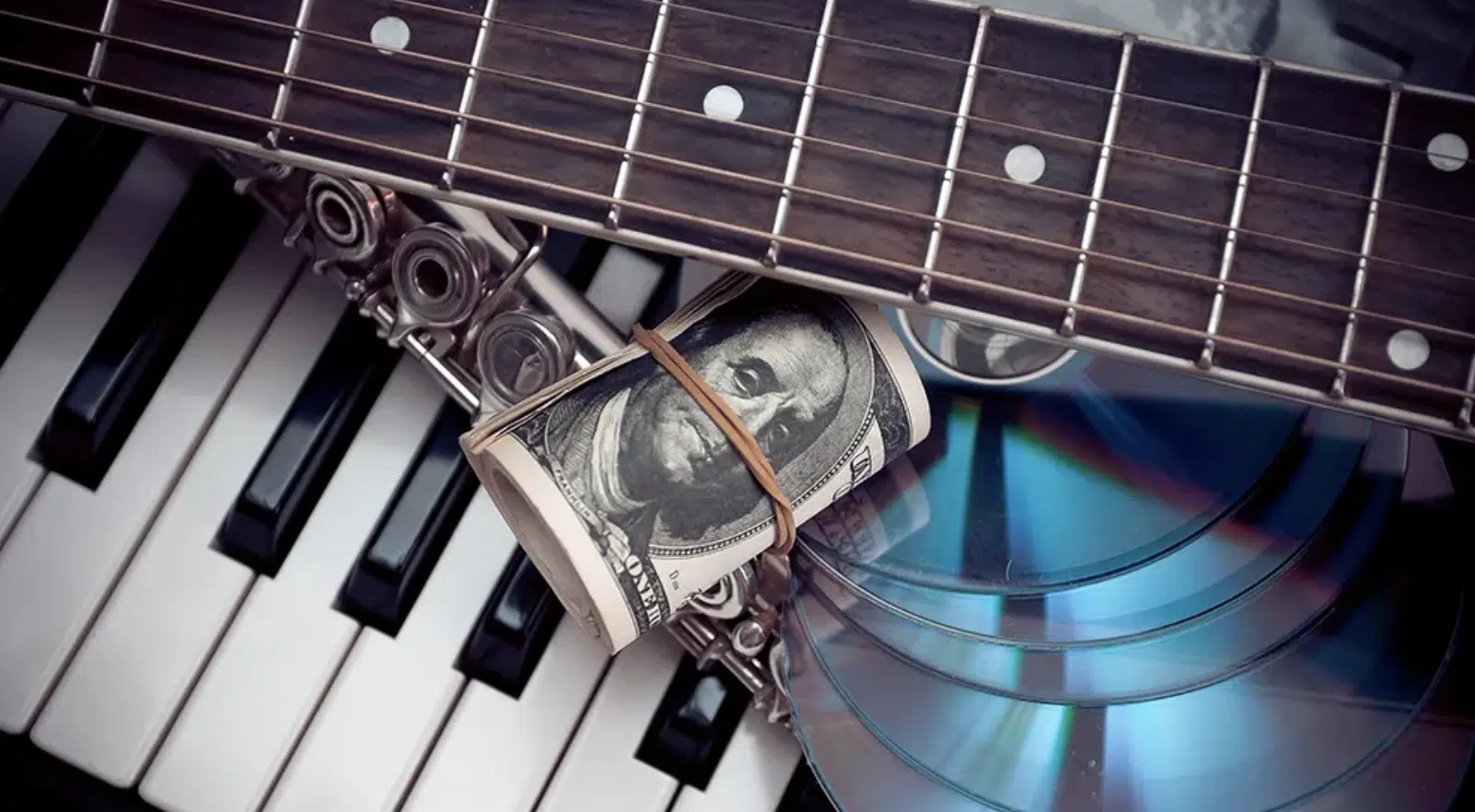
ASCAP’s primary function is to collect performance royalties on behalf of its members, a task it accomplishes through a combination of:
- Monitoring
- Licensing
- Distribution systems
The organization has agreements with thousands of music users, from radio stations and TV networks to bars, restaurants, and online streaming services.
These users are required to obtain a license from ASCAP 一 paying specific license fees that grants them the right to play any music from ASCAP’s vast music library.
ASCAP then uses various tracking technologies (including digital monitoring and surveys) to identify which of your own songs are played and how often.
It guarantees accurate royalty payment distribution.
For instance, if your registered ASCAP songs are played on a major radio station or used in a TV show, ASCAP collects royalties from them and distributes them to the rightful owners (you).
The amount distributed to each member is calculated based on a complex formula that considers factors.
This can include things like the type of usage, the platform’s reach, and duration of play.
This ensures that all members, from indie songwriters to established artists, are fairly compensated for the use of their work in public performances.
Through this meticulous process, ASCAP supports the livelihood of music creators and contributes to a thriving music takeover.
-
Strategies for Maximizing Royalty Collection

Maximizing royalty collection through ASCAP requires a proactive approach from innovative music creators of all kinds.
One effective strategy is to ensure that all music works are correctly registered with ASCAP as soon as they are published or released.
This includes providing detailed information about each song, such as all co-writers and publishers involved, to avoid any delays or discrepancies in royalty payments.
You should also regularly update your catalog with ASCAP whenever new works are created or existing ones undergo significant changes.
This can include new arrangements or remixes.
This meticulous catalog management ensures that all eligible performances are tracked and appropriately compensated.
Another strategy involves utilizing ASCAP’s many tools and resources designed to help members track the same songs and claim their performance royalties.
Pro Tip
ASCAP’s Member Access portal allows creators to view their earnings, report live performances, and manage their repertoire efficiently.
Taking advantage of the ASCAP OnStage performance claim program as a beat-maker, producer, artist, etc. can significantly increase your royalty income.
It allows members to submit setlists for live performances to ensure they collect live performance royalties,
Sync Licensing
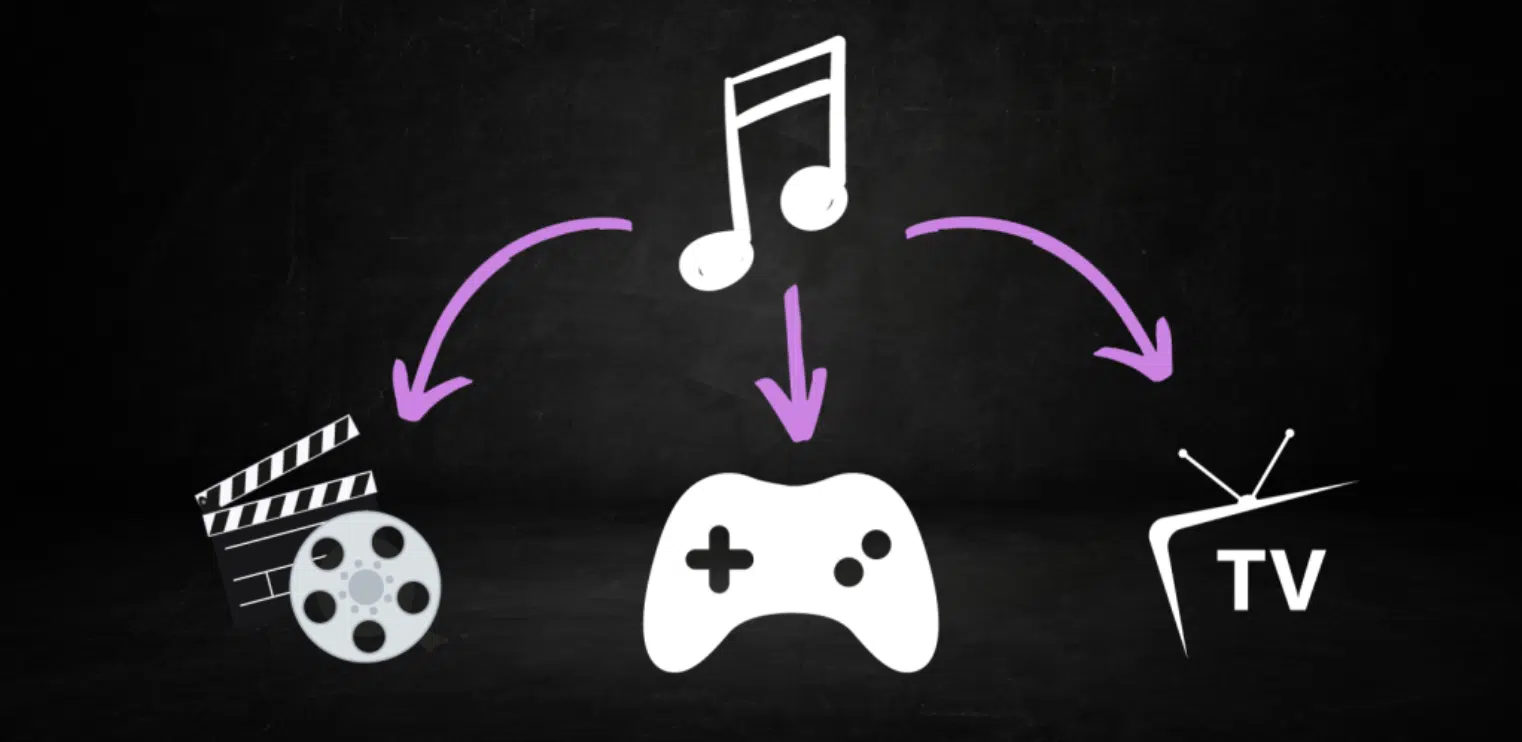
Sync licensing, a critical revenue stream for music creators, involves the use of music in television, movies, commercials, video games, and other visual media.
ASCAP facilitates sync licensing opportunities for people with an ASCAP membership by connecting them with music supervisors and content producers looking for the perfect soundtrack to their visual projects.
For example, let’s say your track is selected for use in a TV show, ASCAP ensures that you’re compensated through sync licensing fees.
Sync licensing fees vary depending on the usage scope, such as whether the music is featured in a national commercial or a local TV episode.
It reflects the value of the music in different contexts.
ASCAP’s extensive network and relationships with production companies and broadcasters make it an invaluable resource for music creators looking to break into sync licensing.
Pro Tip
By registering their works with ASCAP, you can increase their visibility to those searching for licensable, high-quality music.
This exposure can lead to awesome opportunities, such as a song being featured in a major movie soundtrack or a popular television series.
It could significantly boost your income, profile, and status in the industry/music business.
Public Performances and Licensing Agreements

Public performances, ranging from radio broadcasts to live concerts, generate significant revenue for music creators.
ASCAP plays a key role in managing the licensing agreements that make these performances possible, as we’ve discussed.
Through negotiations with venues, broadcasters, and digital platforms, ASCAP ensures that music creators are compensated every time their work is performed publicly.
For instance, when a live performance venue hosts a concert featuring registered ASCAP songs, the venue pays a licensing fee to ASCAP, which then distributes royalties to the songwriters and publishers of the performed works.
These licensing agreements are created to cover various performance scenarios 一 including even when a cover artist performs your song.
It ensures solid (reliable) protection and compensation for ASCAP members.
This arrangement not only benefits music creators but also music users by providing them with legal access to a vast library of music for public performance.
The success of such agreements is evident in the wide range of music available for public enjoyment.
This can, when you join ASCAP, range from background music in restaurants to headline acts at music festivals.
It’s all displayed by ASCAP’s commitment to upholding the rights of music creators (which I’ve found pretty solid).
What is ASCAP? Final Thoughts
ASCAP is a pathway to fair compensation and recognition in the music industry.
It helps you secure your financial future through the collection and distribution of royalties.
As you now know, understanding the intricacies of ASCAP is the way to navigate the unpredictable music industry and ensure that your music is rightfully rewarded.
To complement your journey through the world of rights management, you’ve got to check out this highly-renowned Beatmaker Box (Free Teaser).
This Free Teaser includes 18 legendary loops, complete with Audio & MIDI Stems, created by some of the world’s top producers.
These 100% royalty-free loops are not just sounds 一 they’re tools to help you unleash your creative potential.
Cleared for both personal and commercial use, they offer you the freedom to explore and create without boundaries.
Integrating these high-quality loops into your music can elevate your tracks, making them ready for distribution (and ASCAP registration, of course).
Understanding what is ASCAP as a music producer is more than just about knowing how to collect royalties.
It’s about recognizing the value of your music and ensuring it receives the exposure and compensation it deserves.
So go ahead, create, register, and let ASCAP help you conquer the journey from your home studio to the global stage.
Until next time…







Leave a Reply
You must belogged in to post a comment.